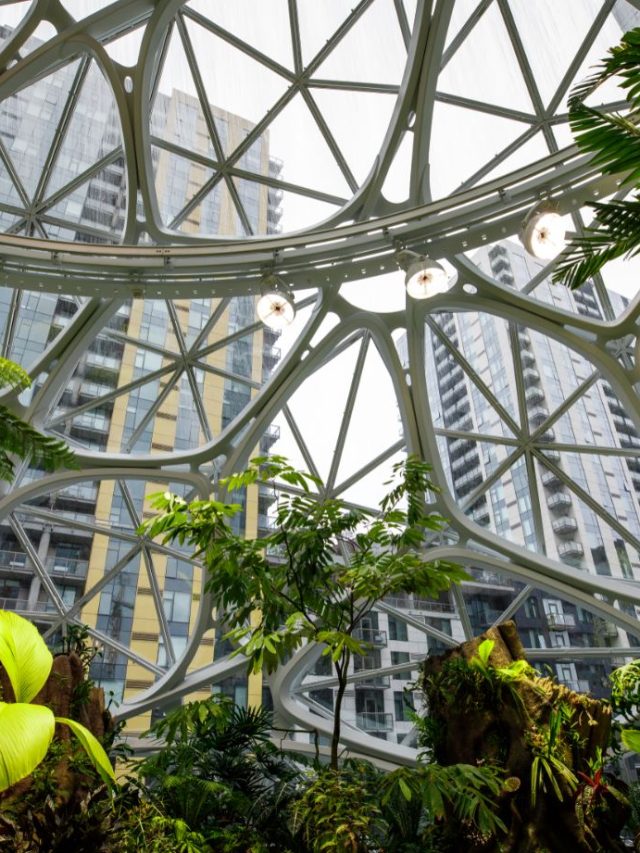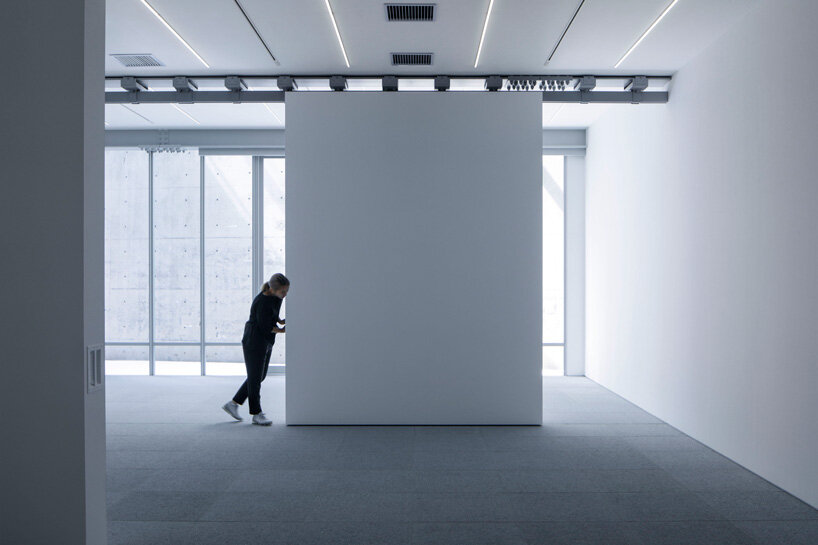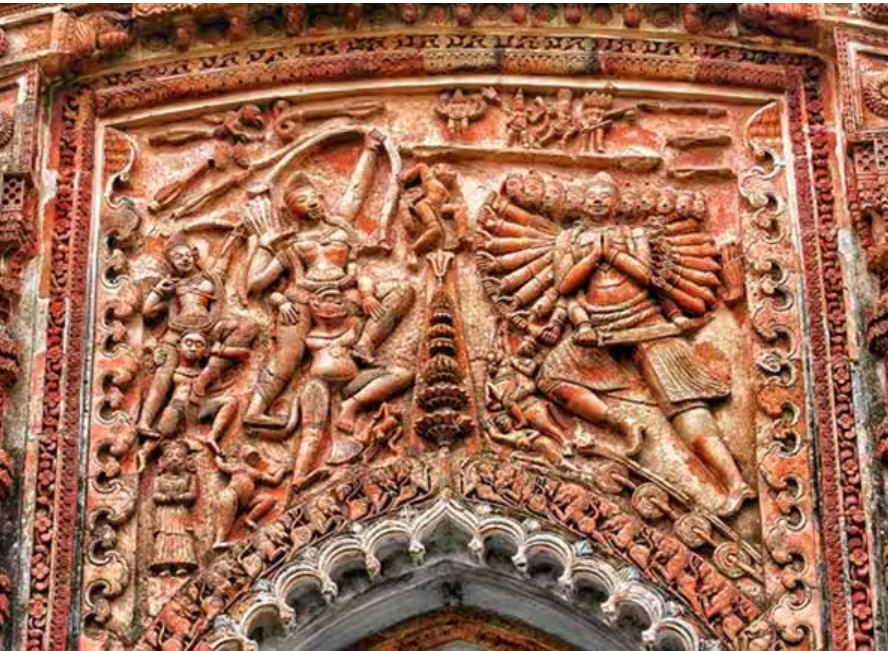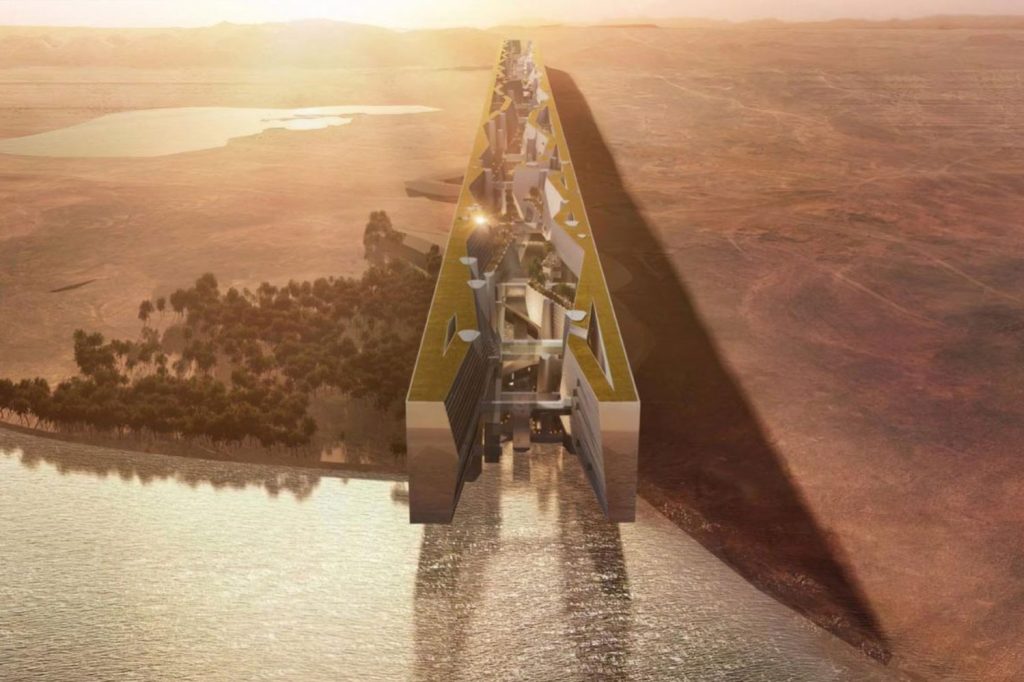What Is Biophilic Design?
The biophilic design concept aims to incorporate organic and naturally inspired components into the built environment, drawing inspiration from the deep connection between humans and nature. Frank Lloyd Wright’s emphasis on studying and being near nature gave rise to the ideology of biophilic design, which has now grown into a movement supported by individuals such as Stephen R. Kellert. According to Kellert, biophilic design architecture is a strategy for creating contemporary structures and landscapes that promote positive human-nature interaction.
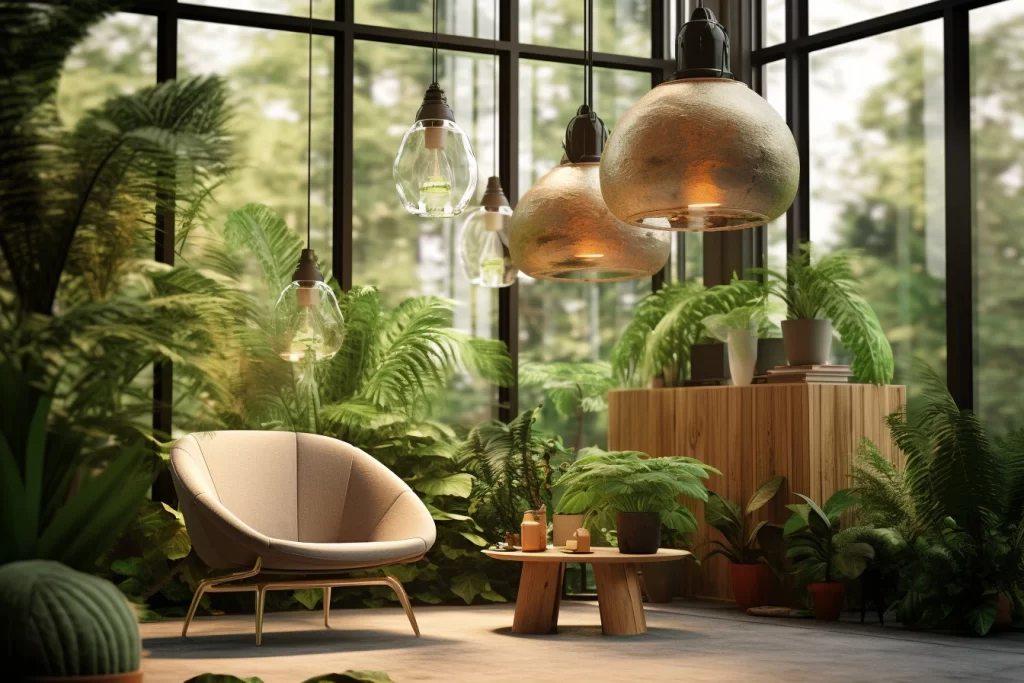
Previously, humankind coexisted peacefully with the natural world. To strengthen this bond, the biophilic landscape design offers observable health advantages like less stress, more output, and better air quality. Some of the fundamental ideas of biophilic interior design are integrating the natural surroundings, natural materials, patterns, and shapes, highlighting natural light, adding plants, and re-creating the interaction between humans and nature.

Given its ability to solve issues such as climate change and improve mental health, biophilic design patterns are becoming increasingly important in the modern world. Biophilic design in architecture demonstrates its significance beyond aesthetics as cities change by serving as a link between urbanism, technology, and the natural environment. In the future, especially in the age of remote work, biophilic design provides a way to create healthy and motivating home-office spaces. In the end, it symbolises a mentality change towards improving our relationship with nature in a variety of accessible living and working environments for both people and businesses.
The Architectural Elements in Biophilic Design
A strong link between the built environment and nature is established through the integration of many architectural components in biophilic design concept. These elements aim to improve inhabitants’ quality of life and create environments that mirror people’s innate connection to the natural world. The following typical architectural elements are incorporated into biophilic design:
1. Abundant Natural Light
Large windows, skylights, and glass walls are used in biophilic house design to provide an abundance of natural light, which creates well-lit areas that promote a pleasant ambience. By improving air quality and lowering reliance on mechanical systems, the utilisation of natural ventilation—including moveable windows, vents, and atriums—promotes a healthier interior atmosphere.

2. Green Roofs and Walls
Incorporating living roofs and vegetated walls, biophilic office design enhances insulation, reduces heat absorption, and promotes biodiversity, resulting in aesthetically pleasing and environmentally friendly architectural solutions.

3. Water Features
Water features, such as reflecting pools and indoor fountains, are included in biophilic design in architecture to produce a calm environment. The visual and auditory elements of water add to the serene and organic atmosphere.
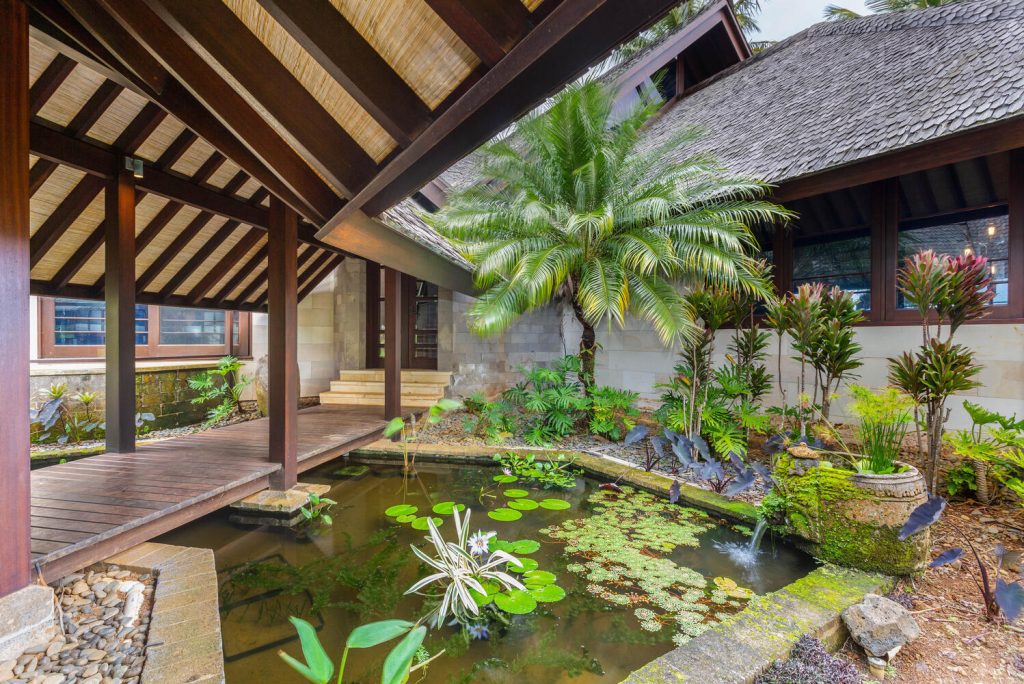
4. Indoor Gardens and Atriums
Interior gardens and large atriums are examples of biophilic house design, which skillfully brings the outside indoors. The incorporation of natural components is made easier by large, open atriums, which strengthen the relationship between built surroundings and the natural world.
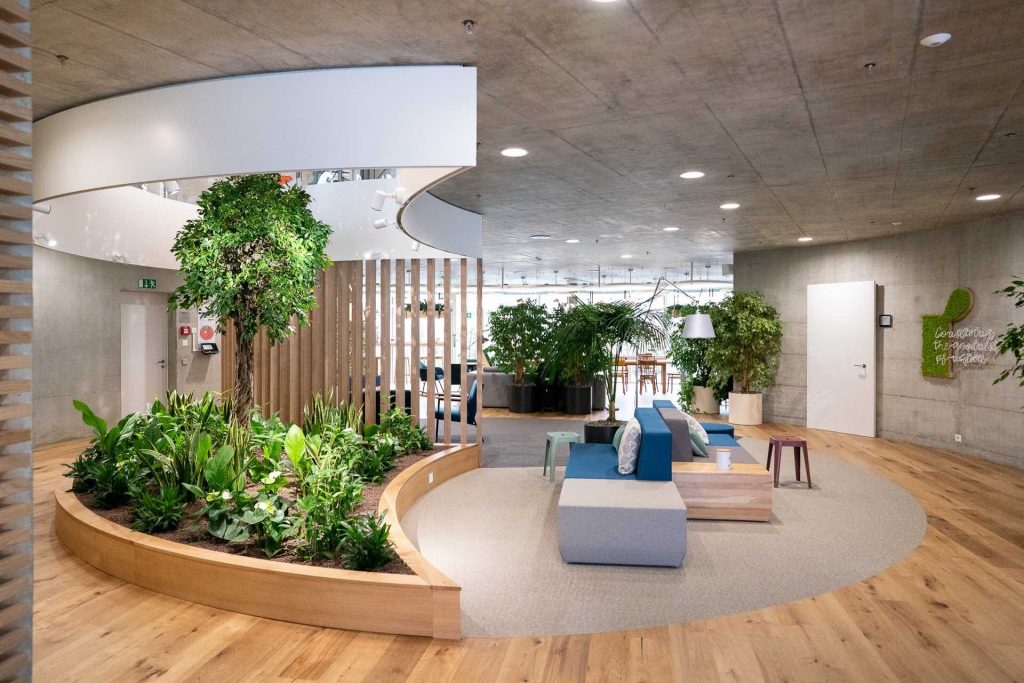
5. Eco-Friendly Building Practices
In order to create resilient and environmentally friendly constructed environments, the biophilic design concept places a high priority on sustainability. It does this by stressing the use of recycled or locally sourced materials, energy efficiency, and water conservation.
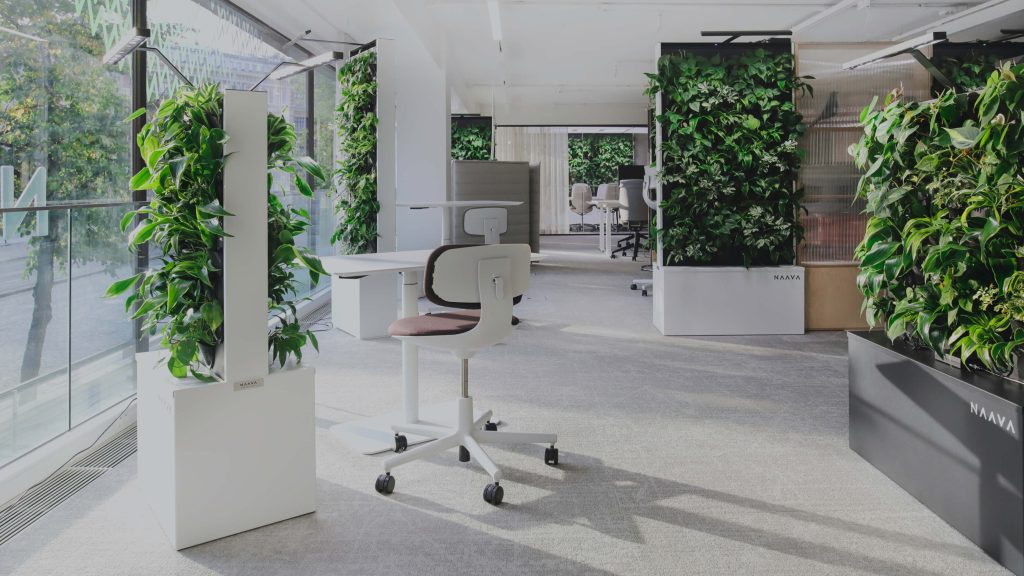
Biophilic Interior Design
Achieving harmony in interior design within biophilic design architecture is facilitated by multiple essential components. These are a few components:
1. Indoor Plants
Include live plants in your home’s decor. This promotes a sense of nature within the constructed environment and can take the form of green walls, potted plants, or vertical gardens. Moreover, plants help to improve the quality of the air.
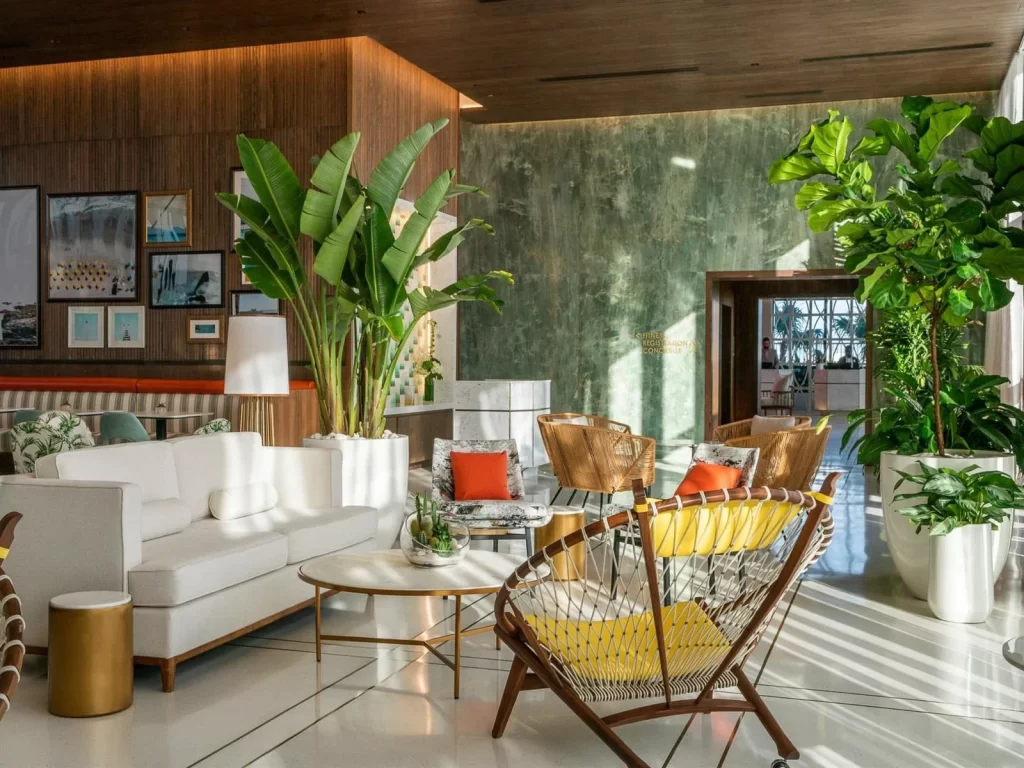
2. Natural Colors and Patterns
Make use of earthy tones, greens, blues, and other colours that may be found in natural environments to create a colour scheme that is influenced by nature. Biophilic interior design elements can also use patterns that evoke natural forms, like leaves or waves.
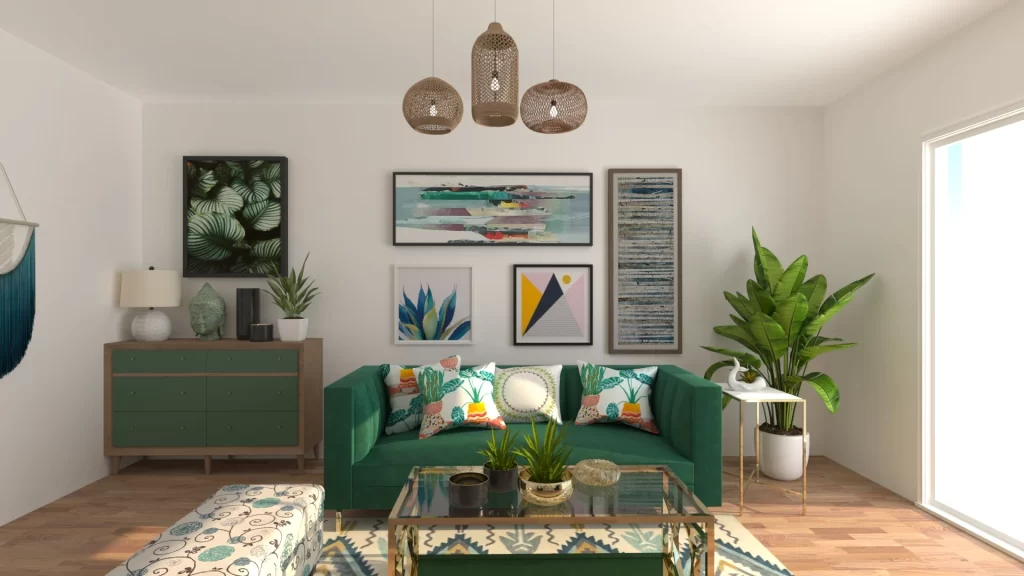
3. Biophilic Artwork
Incorporate pieces of art that depict nature or natural themes. Paintings, sculptures, and other artistic components that suggest a link to the outdoors may fall under this category.
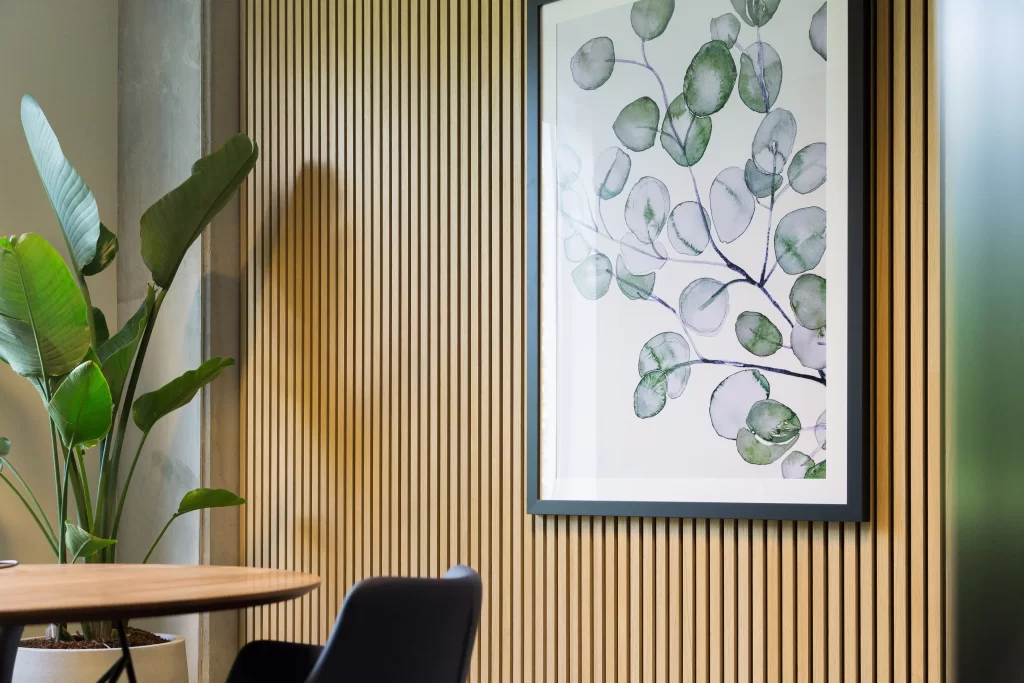
4. Sensory Stimuli
Use all of your senses when designing an interior. To improve the senses and make the space more immersive, think of adding components like tactile materials, soundtracks, or natural scents.

5. Integration of Natural Forms
Incorporate naturally occurring shapes and forms into architectural details, lighting fixtures, furniture, and other interior design aspects.
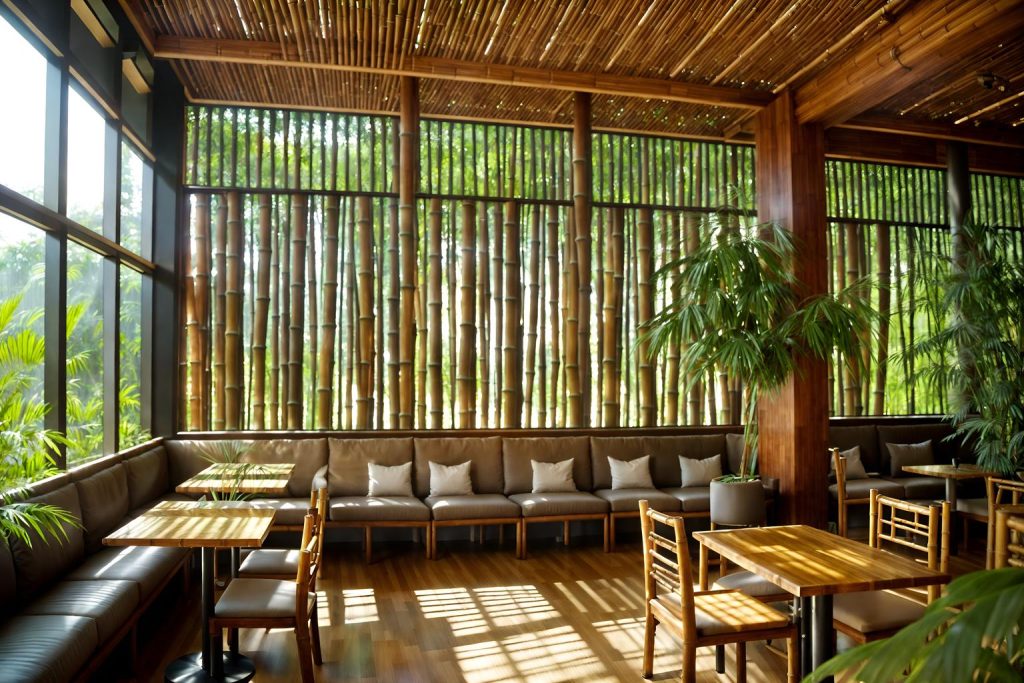
Benefits of Biophilic Interior Design and Architecture
Biophilic design in architecture offers a multitude of benefits that positively impact both individuals and the environment, fostering a harmonious relationship between built spaces and nature.
1. Enhanced Well-Being
It has been demonstrated that biophilic design in the workplace enhances general well-being. Reduction of stress, enhancement of productivity, and enhancement of mental health have all been associated with natural factors including sunlight, plants, and scenic views. An environment that is peaceful and revitalising is enhanced by the use of plants and other natural features.

2. Increased Productivity
Research indicates that the presence of biophilic design in the workplace can lead to a notable increase in productivity. Higher levels of job satisfaction, creativity, and concentration have been linked to having access to natural light, vegetation, and outdoor views. This design strategy aids in producing spaces that energise and excite its people.
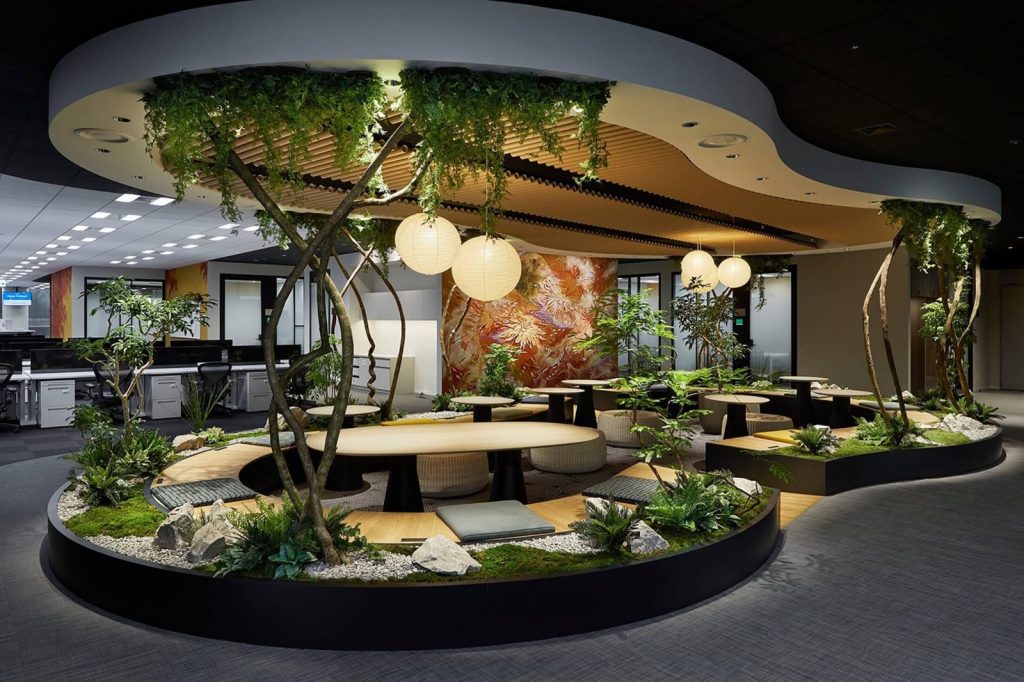
3. Health Benefits
Because biophilic design improves interior air quality, it benefits physical health. Including plants raises oxygen levels and aids with pollutant filtering. These elements work in concert with stress reduction to give residents a more supportive and healthful environment.
4. Sustainable Practices
Sustainable design ideas are in line with biophilic design patterns. Architects and designers can lessen the impact of buildings on the environment by using natural features. Energy efficiency and a reduced ecological footprint are facilitated by green roofs, effective natural ventilation, and the use of sustainable materials.
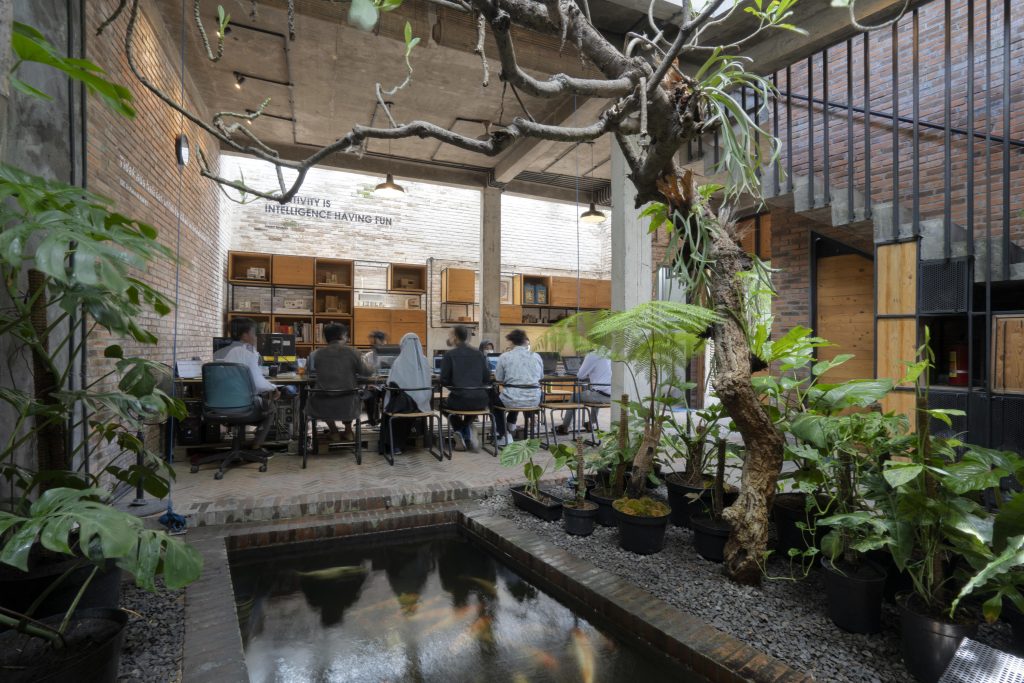
5. Connection with Nature
Biophilic design concept offers an essential link to nature in urban areas. People feel more linked to the outdoors when natural materials are prioritised, spaces that mirror natural habitats are created, and people feel more at balance and tranquillity even in the middle of an urban setting. This link is especially important in settings where there may not be easy access to the natural world. All things considered, biophilic design improves lives by promoting constructed settings that are more aesthetically beautiful, sustainable, and healthy.
Image Courtesy – Puverelli Design

Minerva is a visual artist and currently serves as a sub editor at Abir Pothi.


